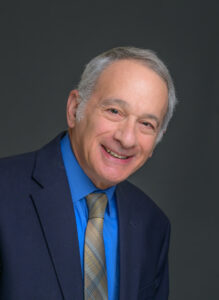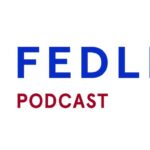
One of the provisions coming out of the recently passed “One Big Beautiful Bill Act” of 2025 (OBBBA) has resulted in enhanced tax savings for some charitable donors, lowered tax savings for some charitable donors, and by all accounts has complicated the tax rules associated with charitable giving for most Americans. This column discusses the tax rule changes related to charitable giving coming out of OBBBA. All of the tax rule changes associated with charitable giving will not become effective until January 1, 2026. This means that charitable donors who want to maximize their charitable tax breaks for 2025 and 2026 have about five months to prepare.
How charitable tax deductions changed with the TCJA.
In order to understand the new provisions coming out of OBBBA that affect charitable giving, it is important to go back to the 2017 tax overhaul resulting from the passage of the Tax Cuts and Jobs Act of 2017 (TCJA).
One of the tax provisions coming out of TCJA was the doubling of the standard deduction. The standard deduction is the amount tax-filers can deduct if they do not itemize deductions on Schedule A of their federal income tax return. Another tax provision coming out of TCJA was a cap of $10,000 for the itemized deduction state and local taxes. Those two changes pushed millions of tax-filers into taking the standard deduction rather than itemizing. This meant millions of filers could not deduct charitable contributions on Schedule A. And as an indirect result, according to the Giving USA Foundation, between 2017 and 2019 charitable contributions decreased by about $66 billion.
A provision coming out of OBBBA will allow charitable donors who do not itemize on Schedule A to take a charitable donation deduction of as much as $2,000 for married joint filers and $1,000 for single filters. In short, this provision would allow many individuals to make charitable contributions and get a tax deduction who would not be eligible otherwise.
However, there are two other provisions coming out of OBBBA that will impose new limits on itemized charitable deductions. The first limit is that charitable donors will not get their full tax deduction because they will lose an amount of their charitable donations equal to 0.5 percent of their adjusted gross income (AGI). The other limit is for those tax-filers who are in the highest federal marginal tax bracket of 37 percent. They will only get to deduct the total amount of their itemized deductions at the amount of 35 percent. This means that two percent of their charitable deductions will not be deductible.
The result of these charitable donation limitations and the expanded state and local tax deduction (increased from the current $10,000 to $40,000) is that charitable donors who want to maximize their tax breaks are advised to start planning now. To help with planning, the following are more details of the charitable donation tax provisions coming out of OBBBA.
$1,000/$2,000 charitable donation deduction for tax-filers who do not itemize.
The $1,000(single filers)/$2,000 (married filing joint filers) tax deduction mainly benefits charitable donors who do not itemize on Schedule A. There are two limits for this deduction, namely:
(1) Charitable contributions must be made via cash, check, or credit card. Donations of property such as clothing or furniture are not included. Gifts of assets such as stock are not included. Gifts must be made to qualified charities such as houses of worship and not to donor advised funds.
(2) The $1,000/$2,000 deduction will reduce an individual’s/married couple’s taxable income and not their adjusted gross income (AGI). This is important because there are other provisions that are tied to AGI and not to taxable income. These provisions include: (1) Medicare Part B and Medicare Part D premium Income-Related Monthly Adjustment Amount (IRMAAs) based on AGI; (2) AGI limits for Roth IRA contributions; and (3) the 3.8 percent net investment income tax (NIIT). To lower AGI, federal employees and retirees should consider making contributions to the traditional TSP, to a health savings account (HSA) if eligible , or if they are eligible, contributions to a deductible traditional IRA.
Learn more about your retirement benefits at our No-Cost webinars, featuring Ed Zurndorfer -
0.5 percent of AGI disallowance on itemized charitable contributions.
The 0.5 percent of AGI disallowance of itemized charitable distributions on Schedule A results in reduced itemized deductions for any tax-filer who itemizes. The following example illustrates:
Example 1. Sally is single and itemizes her deductions. Sally has an AGI of $150,000 during 2026. On her 2026 federal income tax return, Sally cannot deduct 0.5 percent of $150,000 or $750 of charitable contributions.
Example 2. Steven and Marlene are married filing jointly and itemize their deductions. Their 2026 AGI is $350,000. On their 2026 federal income tax return, Steven and Marlene cannot deduct 0.5 percent of $350,000 or $1,750 of charitable contributions.
Note the 0.5 percent of AGI charitable contribution disallowances is a fixed amount each yar. This means that in Example 1, if Sally makes $1,000 of charitable contributions during 2026, her charitable contribution deduction reduces to $1,000 less $750, or $250. Sally would have lost 75 percent of her $1,000 charitable contribution deduction. In Example 2, if Steven and Marlene make $2,000 of charitable contributions during 2026, their charitable contributions deduction reduces to $2,000 less $1,750, or $250. Steven and Marlene would have lost 75 percent of their $2,000 charitable contribution deduction.
However, both Sally and Steven and Marlene have another choice. If they choose not to itemize on their 2026 federal income tax return, then Sally could claim her $1,000 charitable contributions as a full deduction from her taxable income, and Steven and Marlene could claim their $2,000 charitable contributions as a full deduction from their taxable income. Would they do better and pay less overall in federal income taxes during 2026 if they did not itemize their deductions? Perhaps. If they are benefiting from enhanced other itemized deductions (such as the increased state and local tac deduction from a maximum $10,000 in 2025 to a maximum $40,000 in 2026, mortgage interest, and above normal medical and dental expenses), then they are better off itemizing their charitable contributions and forgoing the $1,000/$2,000 deduction from taxable income.
Charitable contribution limit for 37 percent marginal tax bracket individuals.
This charitable contribution limitation for tax-filers who are in 37% marginal tax bracket provision may not affect that many federal employees and retirees. The provision clips the benefit for itemized deductions at 35 percent for tax-filers who are in the 37 percent marginal tax bracket, (which is the highest federal marginal tax bracket). During 2025, the 37 percent marginal tax bracket begins at $626,357 taxable income for single/married filing separate tax filers and $757,601 taxable income for married filing joint/head of household tax filers. Those taxable income limits will be higher in 2026 when the limitation takes effect because of inflation adjustments. Given these 37 percent marginal tax bracket taxable income tax limits, there are probably not that many federal employees and retirees who will be affected.
However, for those federal employees and retirees who will be in a 37 percent marginal tax bracket during 2026, another itemized deduction restriction coming out of OBBBA is the fact that those employees and retirees in the 37 percent marginal tax bracket during 2026 will have taxable income too high and will not qualify for the expanded $40,000 (from the current $10,000 limit) state and local tax itemized deduction. This 2 percent reduction in itemized deductions will affect charitable contributions. Note that the 2 percent reduction in charitable contributions is in addition to the 0.5 percent of AGI disallowance. The result of these limitations is that those individuals during 2025 in a 37 percent marginal tax bracket and will be likely be in a 37% marginal tax bracket during 2026 are advised to consider accelerating charitable contribution into 2025.
Those federal employees and retirees who are age 70.5 may want to make their charitable contributions via a Qualified Charitable Distribution (QCD). QCD donations are not subject to any of the new limits coming out of OBBBA. QCDs for most individuals age 70.5 and older are one of the best tax-advantaged ways to make charitable donations. For those individuals who have reached their required beginning date (RBD) (currently, age 73) who therefore must take a taxable required minimum distribution (RBD) from their traditional IRA and/or an inherited traditional IRA, a QCD counts towards the RMD without the QCD included in income. The QCD could therefore result in lower AGI and taxable income.
The examples given above are for illustrative purposes only. Individual cases will vary. Any information is not a complete summary or statement of all available data necessary for making an investment decision and does not constitute a recommendation. Prior to making any investment decision, you should consult with your financial advisor about your individual situation.
Edward A. Zurndorfer is a CERTIFIED FINANCIAL PLANNER™ professional, Chartered Life Underwriter, Chartered Financial Consultant, Chartered Federal Employee Benefits Consultant, Certified Employees Benefits Specialist and IRS Enrolled Agent in Silver Spring, MD. Tax planning, Federal employee benefits, retirement and insurance consulting services offered through EZ Accounting and Financial Services, and EZ Federal Benefits Seminars, located at 833 Bromley Street - Suite A, Silver Spring, MD 20902-3019 and telephone number 301-681-1652. Raymond James is not affiliated with and does not endorse the opinions or services of Edward A. Zurndorfer or EZ Accounting and Financial Services. The information has been obtained from sources considered to be reliable, but we do not guarantee that the foregoing material is accurate or complete. While we are familiar with the tax provisions of the issues presented herein, as Financial Advisors of RJFS, we are not qualified to render advice on tax or legal matters. You should discuss tax or legal matters with the appropriate professional.

Ed Zurndorfer, EA, ATA, CFP®, CLU®, ChFC®, CEBS®, ChFEBC℠: Federal Employee Benefits Expert
A former career Federal employee, Ed has published a staggering 1,200+ separate articles on Federal Benefits and Retirement!
Just “Google” his name, and you are likely to find a plethora of sites that contain his writings. Drawn to its mission to reach, teach
and serve Feds, Serving Those Who Serve is the only financial planning practice with which Ed has chosen to affiliate in over
20 years teaching. In addition to conducting Federal Benefits seminars for Serving Those Who Serve, you can find Ed’s
writings here on our blog in the FedZone, and on Fed-Soup, MyFederalRetirement, FederalNews Radio and NITP.
He is a member of the Maryland Society of Accountants, the National Association of Enrolled Agents, the International Society of Certified Employee Benefits Specialists, the Financial Planning Association, the National Association of Health Underwriters,
and the Society of Financial Service Professionals. Since 1999, Ed has taught many thousands of Federal employees about
their benefits, in person and at Federal agencies all over the country. Ed is a true national treasure.
Edward A. Zurndorfer is a CERTIFIED FINANCIAL PLANNER™ professional, Chartered Life Underwriter, Chartered Financial Consultant, Chartered Federal Employee Benefits Consultant, Certified Employees Benefits Specialist and IRS Enrolled Agent in Silver Spring, MD. Tax planning, Federal employee benefits, retirement and insurance consulting services offered through EZ Accounting and Financial Services, and EZ Federal Benefits Seminars, located at 833 Bromley Street - Suite A, Silver Spring, MD 20902-3019 and telephone number 301-681-1652. Raymond James is not affiliated with and does not endorse the opinions or services of Edward A. Zurndorfer or EZ Accounting and Financial Services. The information has been obtained from sources considered to be reliable, but we do not guarantee that the foregoing material is accurate or complete. While we are familiar with the tax provisions of the issues presented herein, as Financial Advisors of RJFS, we are not qualified to render advice on tax or legal matters. You should discuss tax or legal matters with the appropriate professional.


